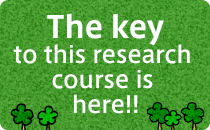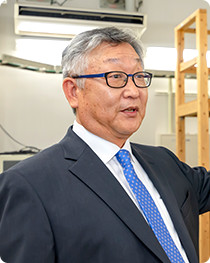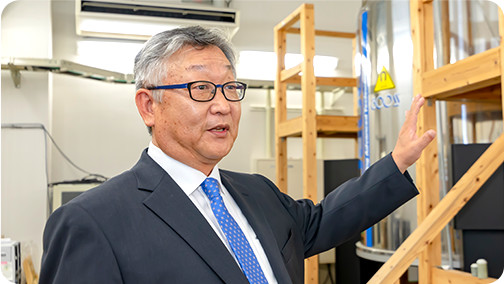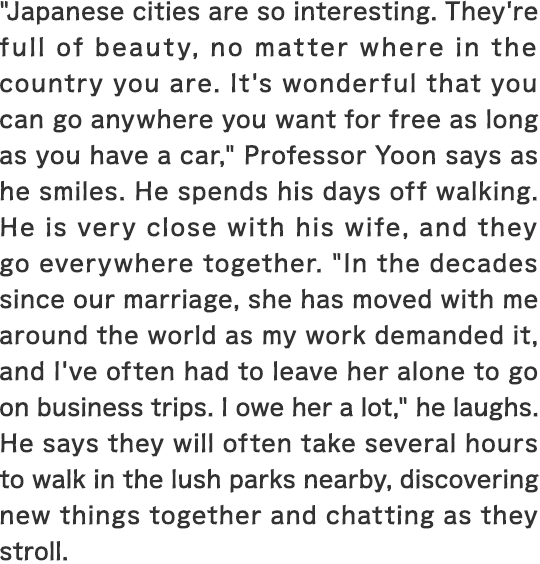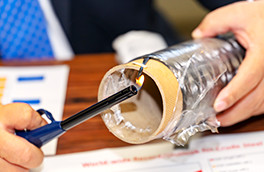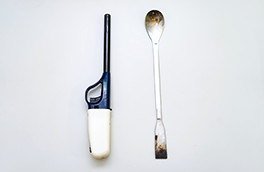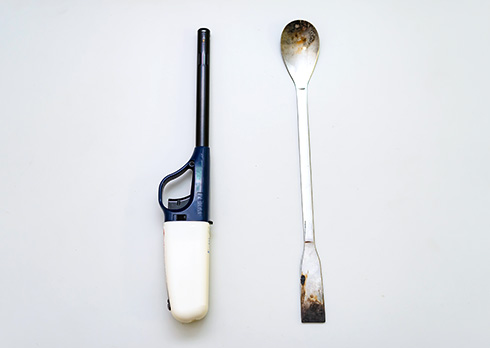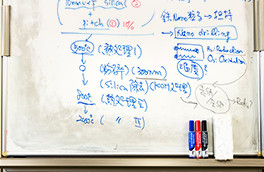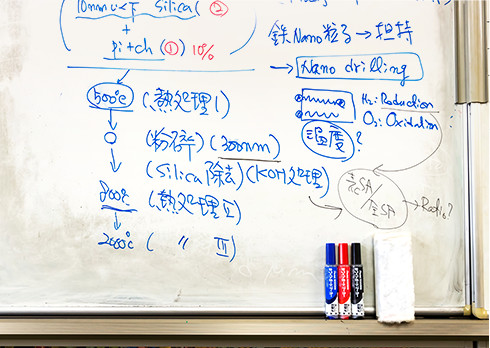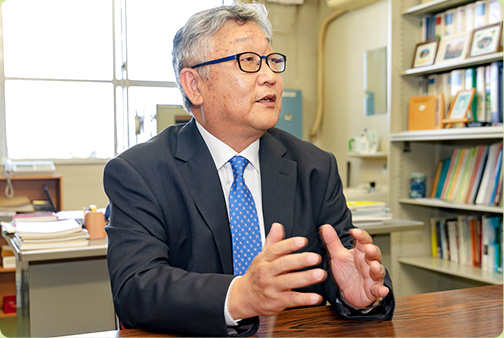 Professor Yoon was thoughtful and courteous in his responses to our questions. Despite his easy-going nature, Professor Yoon has shown a great deal of initiative and courage, having traveled abroad to both Japan and the US for the sake of his research.
Professor Yoon was thoughtful and courteous in his responses to our questions. Despite his easy-going nature, Professor Yoon has shown a great deal of initiative and courage, having traveled abroad to both Japan and the US for the sake of his research.
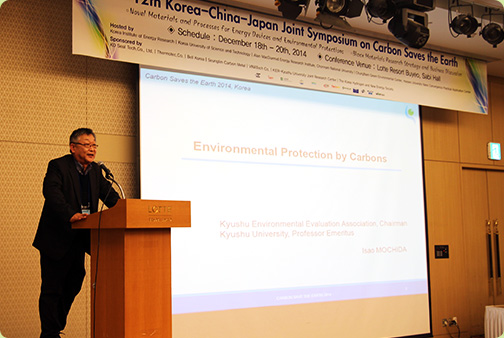 Carbon Saves the Earth (CSE) is a symposium that is held between Japan, China, and South Korea. He has his students attend the conference, which he sees an important, borderless platform for information exchange.
Carbon Saves the Earth (CSE) is a symposium that is held between Japan, China, and South Korea. He has his students attend the conference, which he sees an important, borderless platform for information exchange.
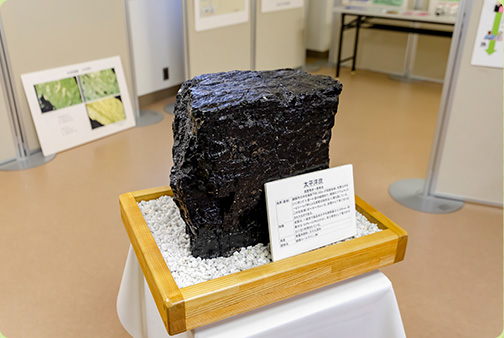 The exhibition room of the Research and Education Center of Carbon Resources can be found on the second floor of Building E on Chikushi Campus. The space is filled with objects and displays about coke and coal. This photo shows raw coal from the Taiheiyo mine (more information here).
The exhibition room of the Research and Education Center of Carbon Resources can be found on the second floor of Building E on Chikushi Campus. The space is filled with objects and displays about coke and coal. This photo shows raw coal from the Taiheiyo mine (more information here).
 Professor Yoon was thoughtful and courteous in his responses to our questions. Despite his easy-going nature, Professor Yoon has shown a great deal of initiative and courage, having traveled abroad to both Japan and the US for the sake of his research.
Professor Yoon was thoughtful and courteous in his responses to our questions. Despite his easy-going nature, Professor Yoon has shown a great deal of initiative and courage, having traveled abroad to both Japan and the US for the sake of his research.
Carbon—derived from fossil fuel resources—has long been used for everyday items like pencils, inks, and more. Yet researchers today have continued to study carbon, discovering new uses for it in many areas, especially in the manufacturing industry. Take pitch-based carbon fibers, for example, which are created by taking heavy oil or coal tar—by-products of petroleum and coal—and carbonizing them at high temperatures. The resulting carbon fibers are relatively light and strong, making them alternatives for reinforcing portable devices, buildings, bridges, and other objects where every ounce matters. They have many applications, for example in electric cars, robotic arms, and other smart devices.
 Carbon Saves the Earth (CSE) is a symposium that is held between Japan, China, and South Korea. He has his students attend the conference, which he sees an important, borderless platform for information exchange.
Carbon Saves the Earth (CSE) is a symposium that is held between Japan, China, and South Korea. He has his students attend the conference, which he sees an important, borderless platform for information exchange.
Carbon materials created from the by-products of fossil fuels like coal play a vital role as a technical option in cutting-edge industries. However, since the start of the industrial revolution in 18th-century England, the world has consumed too much fossil fuel in order to generate energy. This is considered one of the major reasons for the severe environmental pollution we see today.
 The exhibition room of the Research and Education Center of Carbon Resources can be found on the second floor of Building E on Chikushi Campus. The space is filled with objects and displays about coke and coal. This photo shows raw coal from the Taiheiyo mine (more information here).
The exhibition room of the Research and Education Center of Carbon Resources can be found on the second floor of Building E on Chikushi Campus. The space is filled with objects and displays about coke and coal. This photo shows raw coal from the Taiheiyo mine (more information here).
Did you know that coke, a material that is formed by simple coal heating, is indispensable for steel manufacturing? However, steel must be manufactured at temperatures of more than 1,600 degrees Celsius. When iron ore (iron oxide) is turned into steel, coke is transformed into carbon monoxide, which results in large CO2 emissions. Until the end of the 20th century, developed countries in particular powered their economies with energy generated from enormous amounts of fossil fuels. Today, developing countries like China, India, and other Southeast Asian countries also rely on inefficient and excessive consumption of fossil fuels like coal for rapid economic development. This trend is expected to continue beyond 2050.
Fossil fuels are important resources that allow us to efficiently extract the raw materials we need for industry and generate the cheap energy we need to live. However, the earth holds limited reserves of fossil fuels, reserves that some predict will run out by the end of this century. That makes stable acquisition and efficient use of fossil fuels so crucial for future development that it is now a matter of national policy.
I want to solve carbon dioxide-related problems by developing advanced carbon materials for energy-saving and environmentally protective devices through the efficient use of fossil fuel by-products. I mainly do this by developing and applying novel high-functioning carbon materials. My major research interests are: (1) developing novel functional carbon materials and improving their performance for industrial uses (including carbon fibers, activated charcoal, and artificial graphite); (2) using coal and petroleum as energy sources with high efficiency (including coal gasification and petroleum reforming); (3) reducing air pollution by applying novel carbon materials for environmental remediation (including capacitors, absorption heat pumps, elimination of nitrogen oxides (NOx), sulphur oxides (SOx), and volatile organic compounds (VOC)); and (4) exploring the fundamentals of carbon structures to improve our academic understanding of such materials. I am planning to take advantage of into the research into hydrogen being done at Kyushu University by proposing associated research on coal gasification, which is the cheapest way to produce hydrogen.
Japan's carbon industry has always taken a leading role in the world when it comes to research and technology sharing. However, this position is now under threat from the rapid technological development and market expansion that we see in countries like China and South Korea. In light of this situation, I truly hope that we can revolutionize Japan's carbon industry by integrating nano-carbons and other manufacturing technologies that are based on conventional functional carbon materials. This should create novel advanced carbon materials that will improve performance and help bring down prices, expanding the market. I want to help the Japanese carbon industry maintain its leadership position by continuing my research on high-efficiency use of fossil fuels and development of carbon materials that aid in environmental protection.
Fossil fuel resources like biomass, petroleum, and coal are gifts from God. I believe that we can indeed create a zero-emissions society through the efficient use of those resources if we apply them with the utmost care. I want to do my utmost to make this happen.

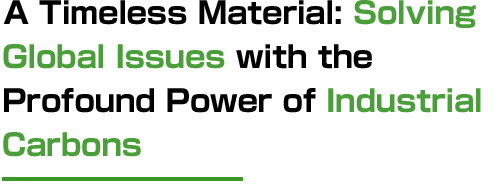
Around the world, scholars are conducting cutting-edge research on carbon. These days most scholars are paying attention to nanotechnology like carbon nanotubes, which were first discovered in Japan. However, the results of that cutting-edge research are actually relatively easy to manufacture. Compare that with research on the conventional carbons that remain after burning fossil fuels. Research on materials that has been with us since ancient times is rare because those materials are simply taken for granted. But that is precisely why we must understand carbon materials more thoroughly, and that is what I have been doing for the past 30 years.
I am satisfied knowing that my research is beneficial to humanity. To me, it is a mission. These days, China is eagerly pursuing a research agenda that pushes the practical uses of conventional carbon materials. Indeed, the country is on the cusp of overtaking Japan. China's dedication to this field highlights the fact that it knows how important carbon materials are for industry and for environmental protection, and wants to push hard to advance their technical development. Turning research results into practical applications is always hard, and that goes for research on conventional carbons as well. However, I believe Japan should work to maintain healthy competition with China while holding on to its position of leadership.
Carbon materials are made from the by-products of biomass, petroleum, and coal, which are given to us like gifts from the faraway past. As industry develops, we are constantly uncovering new functions and abilities of these materials. And that is what makes carbon research so appealing and interesting: the fact that it is both old and new. I'm confident that our efforts can lead to the discovery of novel carbon materials that can sustain Japan's state-of-the-art manufacturing industry.

![]()









